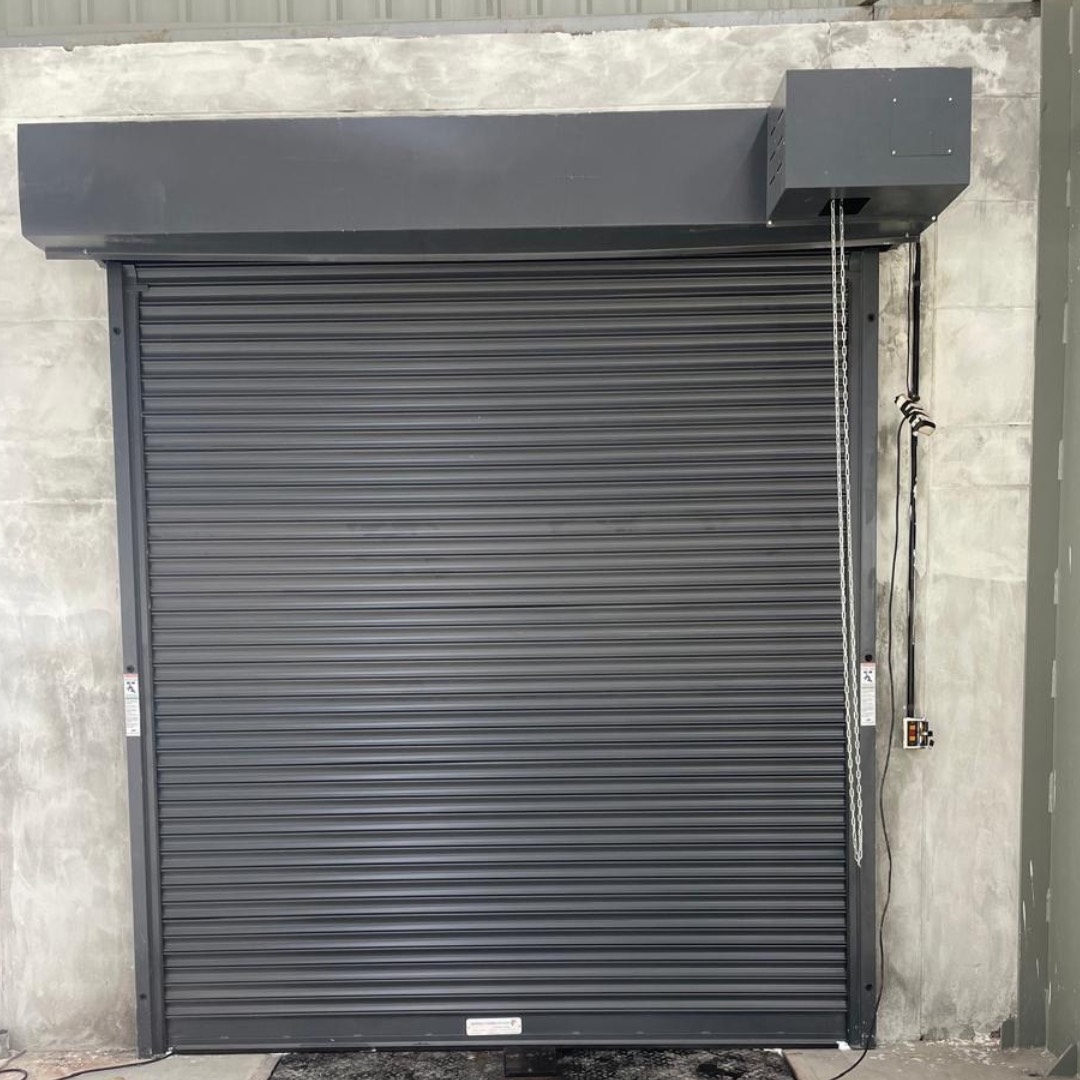
Rolling shutters are popular for businesses and homeowners due to their versatility and security benefits. However, rolling shutters can encounter problems over time, like any mechanical system. Here are some common issues and their solutions:
Jamming or Binding
- Problem: The shutter fails to open or close smoothly due to obstructions, worn components, or misalignment.
- Solutions:
- Inspect for obstructions: Check for debris, insects, or foreign objects blocking the shutter’s movement.
- Lubricate moving parts: Apply a high-quality lubricant to the rollers, tracks, and other moving components to reduce friction.
- Check for misalignment: Ensure the shutter tracks are correctly aligned and the springs are not damaged or stretched.
- Professional maintenance: If the problem persists, consider contacting a professional rolling shutter technician for a thorough inspection and repair.

Spring Failure
- Problem: The springs that control the shutter’s opening and closing mechanism become damaged or worn, leading to uneven operation or failure.
- Solutions:
- Regular inspections: Conduct periodic inspections of the springs to check for signs of wear, corrosion, or damage.
- Professional replacement: If the springs are damaged, it is recommended that a qualified technician replace them.
- Preventive maintenance: Proper maintenance, such as lubrication and cleaning, can help prolong the springs’ life.
Motor Problems
- Problem: The motor that operates the rolling shutter malfunctions, preventing it from opening or closing.
- Solutions:
- Check power supply: Ensure the motor receives adequate power and the electrical connections are secure.
- Inspect for damage: Look for any visible signs of damage to the motor, such as burn marks or loose wires.
- Professional repair or replacement: If the motor is damaged or beyond repair, a professional technician will need to replace it.
Remote Control Issues
- Problem: The remote control used to operate the rolling shutter is not functioning correctly.
- Solutions:
- Check the battery: Ensure the remote control batteries are fresh and properly installed.
- Replace remote: If the batteries are not the issue, the remote control may need to be replaced.
- Repair remote: Some remote controls may require repairing with the shutter’s receiver. Consult the user manual for specific instructions.
Weather Damage
- Problem: Strong winds, heavy rain, or extreme temperatures can cause damage to the rolling shutter and its components.
- Solutions:
- Regular inspections: Inspect the shutter for signs of damage, such as dents, cracks, or loose components.
- Repair or replacement: If the shutter has been damaged by weather, it may need to be repaired or replaced.
- Preventive measures: Consider installing weather stripping or storm shutters to protect the rolling shutter from harsh weather conditions.

Security Concerns
- Problem: The rolling shutter may not provide adequate security due to vulnerabilities in the system.
- Solutions:
- Regular inspections: Conduct regular inspections to identify and address any security vulnerabilities.
- Upgrade hardware: To enhance security, consider upgrading the shutter’s hardware, such as the motor or control system.
- Professional consultation: Consult a security expert to assess your needs and recommend appropriate security measures.
Noise Issues
- Problem: The rolling shutter may produce excessive noise during operation, which can be disruptive, especially in residential areas.
- Solutions:
- Inspect for loose components: Check for loose bolts, screws, or other elements that may be causing noise.
- Lubricate moving parts: Apply a high-quality lubricant to reduce friction and noise.
- Install noise-reducing materials: To dampen the sound, consider installing noise-absorbing materials, such as foam or rubber gaskets.
Corrosion
- Problem: Over time, the shutter’s components may become corroded due to exposure to moisture, salt, or other corrosive elements.
- Solutions:
- Regular inspections: Inspect the shutter for signs of corrosion, such as rust or pitting.
- Preventive measures: Apply protective coatings or sealants to help prevent corrosion.
- Professional repair or replacement: If corrosion is severe, repairing or replacing the affected components may be necessary.
Energy Efficiency
- Problem: Older rolling shutters may not be energy-efficient, leading to increased energy consumption.
- Solutions:
- Upgrade to insulated shutters: Consider upgrading to insulated rolling shutters to improve energy efficiency and reduce heating and cooling costs.
- Proper installation: Ensure the shutter is installed correctly to prevent gaps or drafts affecting energy efficiency.
- Regular maintenance: Proper maintenance, such as cleaning and lubrication, can help to maintain the shutter’s energy efficiency.
Accessibility Considerations
- Problem: Rolling shutters may pose accessibility challenges for individuals with disabilities.
- Solutions:
- Choose accessible designs: Select shutter designs compatible with accessibility features, such as automatic or remote control.
- Consider alternative options: Explore alternative window coverings, such as blinds or curtains, that may be more accessible.
- Consult with accessibility experts: Consult with accessibility experts to ensure that the shutter installation complies with relevant regulations and guidelines.
Final Thoughts
Addressing these common problems and following the recommended solutions can help ensure the smooth and reliable operation of your rolling shutter. Regular maintenance and inspections are essential for preventing issues and prolonging the shutter’s life.

